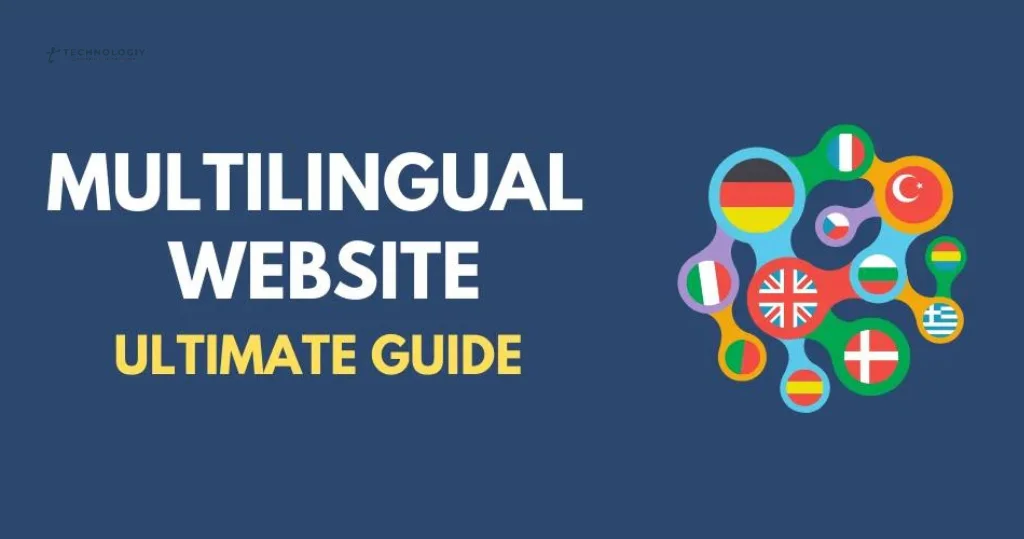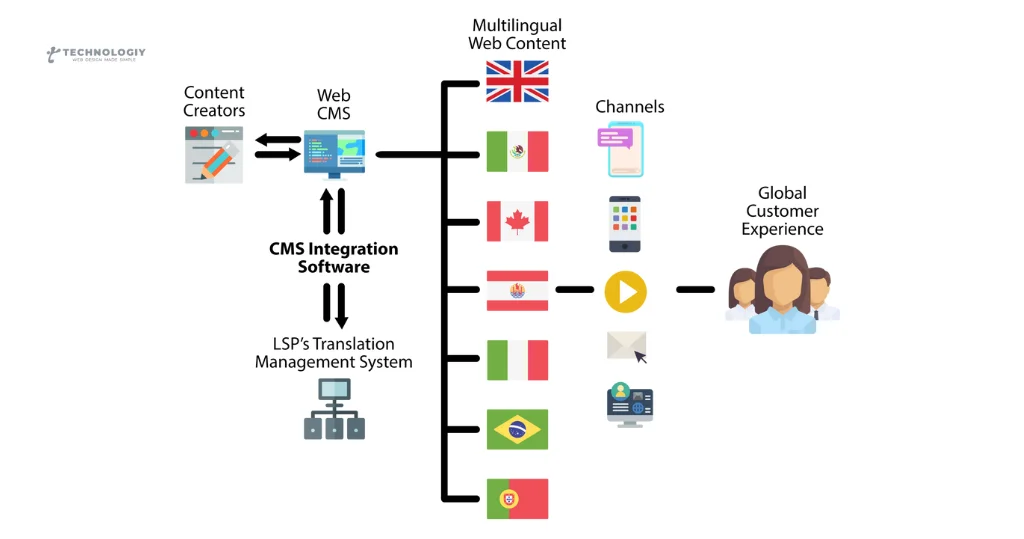Unlock Global Opportunities with Multilingual Website Integration: In today’s interconnected world, businesses of all sizes have the incredible opportunity to connect with customers from around the globe. However, language barriers can often hinder communication and limit the reach of your website. That’s where multilingual website integration comes in. By transforming your website into a multilingual powerhouse, you can unlock a world of global opportunities.
Why Multilingual Website Integration?
The answer is simple – it allows you to effectively communicate with customers who speak different languages. By breaking down language barriers, you can expand your customer base and tap into new markets. Whether you’re a small local business or a multinational corporation, multilingual website integration can help you reach a wider audience and drive new business growth.
Benefits of Multilingual Website Integration:
Global Reach:
With a multilingual website, you can reach potential customers from all corners of the world. By speaking their language, you can create a personal connection and establish trust, making it more likely for them to engage with your brand.
Improved User Experience:
When a website is available in multiple languages, visitors can easily navigate through its content in their preferred language. This enhances user experience, increases engagement, and encourages longer browsing sessions.
Enhanced SEO:
Multilingual website integration can significantly boost your search engine optimization efforts. By optimizing your website for different languages, you can rank higher in search engine results for relevant keywords in multiple languages, attracting more organic traffic to your site.
Increased Conversions:
Studies have shown that people are more likely to make a purchase or take action when information is presented in their native language. By removing language barriers, you can increase conversions and drive revenue growth.

Competitive Edge:
By offering a multilingual website, you differentiate yourself from competitors who have not yet tapped into this global market. This can give you a significant advantage and position your brand as customer-centric and forward-thinking.
How to Implement Multilingual Website Integration:
Choose the Right Translation Method:
There are various translation methods available, including automatic translation tools and professional translation services. Depending on your budget, timeframe, and quality requirements, choose the option that best suits your needs.
Localize Content:
It’s not just about translating words; it’s about adapting your content to the cultural nuances of your target audience. Localization ensures that your message resonates with your global customers on a deeper level.
Optimize for SEO:
Just like with a monolingual website, it’s crucial to optimize your multilingual website for search engines. Conduct keyword research in different languages and optimize each page accordingly to maximize your visibility.
Test and Monitor:
After implementing multilingual website integration, it’s important to test and monitor your website’s performance. Keep an eye on user engagement, conversion rates, and feedback to continuously improve and optimize your multilingual website.
Unlock Global Opportunities Today:
Don’t let language barriers hold your business back. Embrace the power of multilingual website integration and unlock unlimited global opportunities. By speaking your customers’ language, you can connect with them on a deeper level, expand your reach, and drive business growth. Start your journey towards a truly global presence today.
Remember, multilingual website integration is not just a luxury; it's a necessity in today's global marketplace. Don't miss out on the chance to unlock new markets, connect with international customers, and take your business to new heights. Invest in multilingual website integration and watch your global opportunities soar.Multilingual Website Integration:
Unleashing the Power of SEOIn today’s globalized world, having a strong online presence is crucial for businesses looking to expand their reach and tap into new markets. And when it comes to optimizing your website for search engines, multilingual website integration is a game-changer. By catering to a diverse audience in their native languages, you can boost your SEO efforts and take your business to new heights.
So, what exactly is multilingual website integration? It involves the process of translating and adapting your website content to different languages, allowing users from different regions to access your site and understand your offerings. This strategic approach not only enhances user experience but also plays a significant role in improving your search engine rankings.
When it comes to SEO, multilingual website integration has several benefits that can’t be ignored:
Expanded Reach:
By offering your website in multiple languages, you can tap into new markets and connect with potential customers who prefer to browse the internet in their native language. This expanded reach not only increases your brand visibility but also provides you with a larger target audience to engage with.
Improved User Experience:
When visitors can navigate your website effortlessly in their preferred language, they are more likely to spend more time exploring your content, products, and services. A seamless user experience leads to increased engagement, lower bounce rates, and higher conversion rates – all of which are vital for SEO success.
Increased Organic Traffic:
Multilingual website integration can significantly improve your organic search rankings. By providing content in different languages, you increase the chances of appearing in search results for relevant keywords in those specific languages. This targeted approach allows you to attract more organic traffic from diverse sources, ultimately boosting your website’s visibility.
Enhanced Credibility and Trust:
When users can access your website in their native language, it creates a sense of trust and credibility. By speaking your customers’ language, you show that you understand their needs and are committed to providing them with a personalized experience. This can lead to stronger customer relationships and increased loyalty.
Competitive Advantage:
While many businesses focus on optimizing their websites for SEO in a single language, embracing multilingual website integration can give you a significant competitive advantage. By catering to an international audience, you position your brand as inclusive and forward-thinking, setting yourself apart from competitors who may not have expanded their reach in the same way.
In conclusion, multilingual website integration is a powerful tool that can take your SEO efforts to new heights. By expanding your reach, improving user experience, increasing organic traffic, enhancing credibility, and gaining a competitive edge, you’ll be well on your way to global success. So, why limit your business to a single language when you can unlock the full potential of multilingual website integration? Start today and experience the transformative power of reaching a global audience in their preferred language.
Are you interested in broadening your online presence and connecting with a larger audience?
If so, implementing multilingual website integration is a crucial step in making your website accessible to users from different parts of the world. In this step-by-step guide, we will walk you through the process of integrating multilingual capabilities into your website, allowing you to connect with a global audience. Let’s get started!
Step 1: Determine Your Target Languages:
The first step in implementing multilingual website integration is to determine which languages you want to support on your website. Consider your target audience and the regions you want to target. Conducting market research can help you identify the languages that are most relevant to your target audience.
Step 2: Choose the Right Content Management System (CMS):
To effectively implement multilingual website integration, it’s essential to choose a CMS that supports multiple languages. There are several CMS options available, such as WordPress, Drupal, and Joomla, that offer multilingual functionality. Select a CMS that suits your needs and has the necessary language support.
Step 3: Install a Language Switcher:
A language switcher is a user interface element that enables visitors to change between various language versions of your website. Install a language switcher plugin or module on your CMS to provide this functionality. This will allow your users to easily navigate and switch between different language versions of your website.
Step 4: Translate Your Content:
Now comes the most crucial step – translating your website content into the target languages. You have two options for translation: manual or automatic. Manual translation involves hiring professional translators to translate your content accurately. Automatic translation relies on machine translation tools like Google Translate, but keep in mind that the results may not always be perfect. Select the choice that aligns most with your budget and needs.
Step 5: Create Language-Specific URLs:
To ensure that search engines understand and index your multilingual content correctly, it’s essential to create language-specific URLs. This means that each language version of your website should have its own unique URL structure. For example, www.yourwebsite.com/en for English and www.yourwebsite.com/es for Spanish. This will help search engines determine the language of each page and improve your website’s visibility in local search results.
Step 6: Implement Hreflang Tags:
Hreflang tags are HTML tags that inform search engines about the language and geographical targeting of a specific page. Implementing hreflang tags on your multilingual website will help search engines deliver the most relevant language version of your website to users in different countries. Consult your CMS documentation or hire a developer to correctly implement hreflang tags on your website.
Step 7: Optimize Your Multilingual Content for SEO:
Remember to optimize your multilingual content for search engines. Conduct keyword research in each target language and incorporate relevant keywords into your meta tags, headings, and content. This will help improve your website’s visibility and organic search rankings in different languages.
Step 8: Test and Monitor Your Multilingual Website:
Before launching your multilingual website, thoroughly test each language version to ensure that all elements, including navigation, images, and forms, are functioning correctly. Also, continually monitor your website’s performance, user behavior, and SEO rankings to identify any issues and make necessary improvements.
By following this step-by-step guide, you can successfully implement multilingual website integration and open up new opportunities to connect with a global audience. Remember, catering to your audience’s language preferences is a key factor in building trust and establishing a strong online presence. Good luck!
